Classify them into basic and acidic hydroxides:
NaOH,Mg(OH)2,Al(OH)3,Be(OH)2,B(OH)3
To classify the given hydroxides into basic and acidic hydroxides, we will analyze each compound based on the properties of the elements involved and their behavior in reactions.
1. Identify the Hydroxides:
The hydroxides given are:
- NaOH (Sodium Hydroxide)
- Mg(OH)₂ (Magnesium Hydroxide)
- Al(OH)₃ (Aluminum Hydroxide)
- Be(OH)₂ (Beryllium Hydroxide)
- B(OH)₃ (Boric Acid)
2. Classify NaOH:
- Sodium (Na) is an alkali metal (Group 1).
- Alkali metals form basic hydroxides because they readily lose an electron to form cations (Na⁺) and hydroxide ions (OH⁻).
- Classification: Basic Hydroxide.
3. Classify Mg(OH)₂:
- Magnesium (Mg) is an alkaline earth metal (Group 2).
- Similar to alkali metals, alkaline earth metals also form basic hydroxides as they can lose electrons to form Mg²⁺ and OH⁻.
- Classification: Basic Hydroxide.
4. Classify Al(OH)₃:
- Aluminum (Al) is a post-transition metal and is amphoteric.
- Amphoteric hydroxides can react with both acids and bases. Al(OH)₃ can react with acids to form salts and with bases to form complex ions.
- Classification: Amphoteric Hydroxide (can act as both acidic and basic).
5. Classify Be(OH)₂:
- Beryllium (Be) is also a post-transition metal and is amphoteric.
- Similar to Al(OH)₃, Be(OH)₂ can react with both acids and bases.
- Classification: Amphoteric Hydroxide (can act as both acidic and basic).
6. Classify B(OH)₃:
- Boron (B) is a metalloid and forms boric acid (B(OH)₃).
- Boric acid is known to be acidic because it can accept hydroxide ions and release H⁺ ions in solution.
- Classification: Acidic Hydroxide.
Summary of Classifications:
- Basic Hydroxides:
- NaOH
- Mg(OH)₂
- Amphoteric Hydroxides:
- Al(OH)₃
- Be(OH)₂
- Acidic Hydroxide:
- B(OH)₃
The hydroxides given are:
- NaOH (Sodium Hydroxide)
- Mg(OH)₂ (Magnesium Hydroxide)
- Al(OH)₃ (Aluminum Hydroxide)
- Be(OH)₂ (Beryllium Hydroxide)
- B(OH)₃ (Boric Acid)
- Sodium (Na) is an alkali metal (Group 1).
- Alkali metals form basic hydroxides because they readily lose an electron to form cations (Na⁺) and hydroxide ions (OH⁻).
- Classification: Basic Hydroxide.
- Magnesium (Mg) is an alkaline earth metal (Group 2).
- Similar to alkali metals, alkaline earth metals also form basic hydroxides as they can lose electrons to form Mg²⁺ and OH⁻.
- Classification: Basic Hydroxide.
- Aluminum (Al) is a post-transition metal and is amphoteric.
- Amphoteric hydroxides can react with both acids and bases. Al(OH)₃ can react with acids to form salts and with bases to form complex ions.
- Classification: Amphoteric Hydroxide (can act as both acidic and basic).
- Beryllium (Be) is also a post-transition metal and is amphoteric.
- Similar to Al(OH)₃, Be(OH)₂ can react with both acids and bases.
- Classification: Amphoteric Hydroxide (can act as both acidic and basic).
- Boron (B) is a metalloid and forms boric acid (B(OH)₃).
- Boric acid is known to be acidic because it can accept hydroxide ions and release H⁺ ions in solution.
- Classification: Acidic Hydroxide.
- Basic Hydroxides:
- NaOH
- Mg(OH)₂
- Amphoteric Hydroxides:
- Al(OH)₃
- Be(OH)₂
- Acidic Hydroxide:
- B(OH)₃
Similar Questions
Knowledge Check
Al(OH)3 is
AacidicBBasicCamphotericDneither acidic nor basicWhich is more basic than hydroxide (OH−) ion ?
ACH3−NH2BCH3−CH2−O−CF−DPh−NH2Amphoterism
Amphoteric oxides, such as aluminium oxide, are soluble both in strongly acidic and in strongly base solutions :
In acid:Al2O3(s)+6H3O+(aq)⇔2Al3+(aq)+9H2O(l)
In base:Al(OH)3(s)+OH−(aq)⇔Al(OH)−4(aq)
Dissolution of Al(OH)3 in excess base is just a special case of the effect of complex-ion formation on solubility.Al(OH)3 dissolves because excess OH− ions convert it to the soluble complex ion Al(OH)−4(aluminate ion)The effect of pH on the solubility of Al(OH)3 is shown in figure.
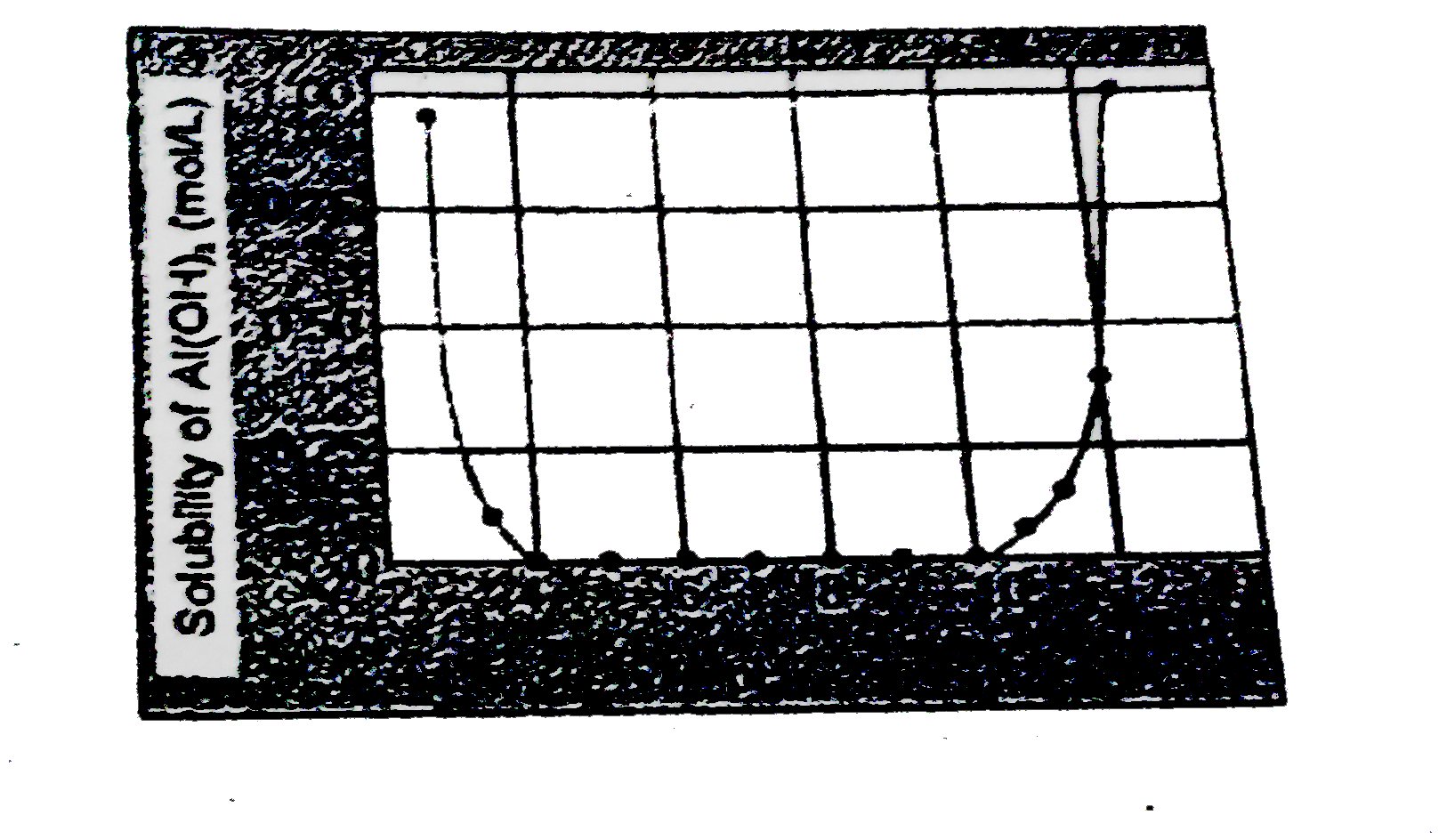
Other examples of amphoteric hydroxides include Zn(OH)2,Cr(OH)3,Sn(OH)2andPb(OH)2, which react with excess OH− ions to form the soluble complex ion Zn(OH)2−4(zincate ion),Cr(OH)−4(chromite ion),Sn(OH)−3 , Fe(OH)2andFe(OH)3 , dissolve in strong acid but not in strong base.
Which of the following curves best represents the variation of solubility of ferrous hydroxide Fe(OH)2 with the concentration of [H+] ions in the solution:A B
B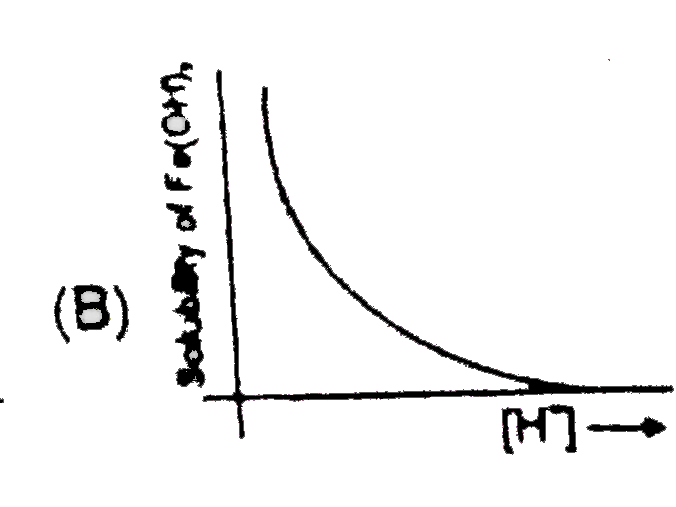 C
C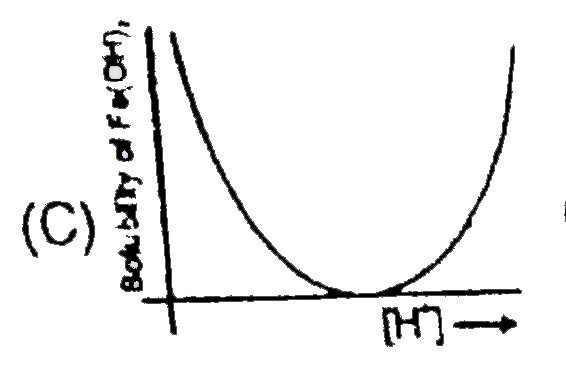 D
D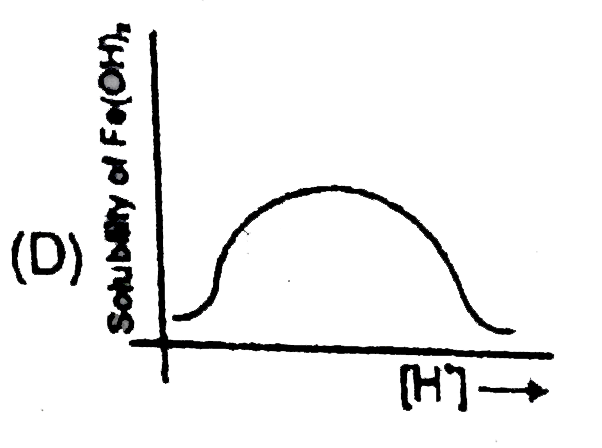
MGO+MG(OH)2
View SolutionWhich of the following is an amphoteric hydroxide?
( (A) Ca(OH)2
( (B) Mg(OH)2
(C) Be(OH)2
(D) Sr(OH)2
View SolutionAmphoteric hydroxides react with both alkalies and acids.Which of the following group 2 metal hydroxides is soluble in sodium hydroxide?
(A) Be(OH)2
(В) Mg(OH)2
(C) Ca(OH)2
(D)Ba(OH)2
View SolutionArrange the following in the order of property mentioned :
(i) BaCl2,MgCl2,BeCl2,CaCl2 increasing ionic character
(ii) Mg(OH)2,Sr(OH)2,Ba(OH)2,Ca(OH)2 increasing solubility in water
(iii) BeO,MgO,BaO,CaO
increasing basic character
(iv) Mg(OH)2,Ba(OH)2,Ca(OH)2 increasing basic character
View SolutionAmphoterism
Amphoteric oxides, such as aluminium oxide, are soluble both in strongly acidic and in strongly base solutions :
In acid:Al2O3(s)+6H3O+(aq)⇔2Al3+(aq)+9H2O(l)
In base:Al(OH)3(s)+OH−(aq)⇔Al(OH)−4(aq)
Dissolution of Al(OH)3 in excess base is just a special case of the effect of complex-ion formation on solubility.Al(OH)3 dissolves because excess OH− ions convert it to the soluble complex ion Al(OH)−4(aluminate ion)The effect of pH on the solubility of Al(OH)3 is shown in figure.
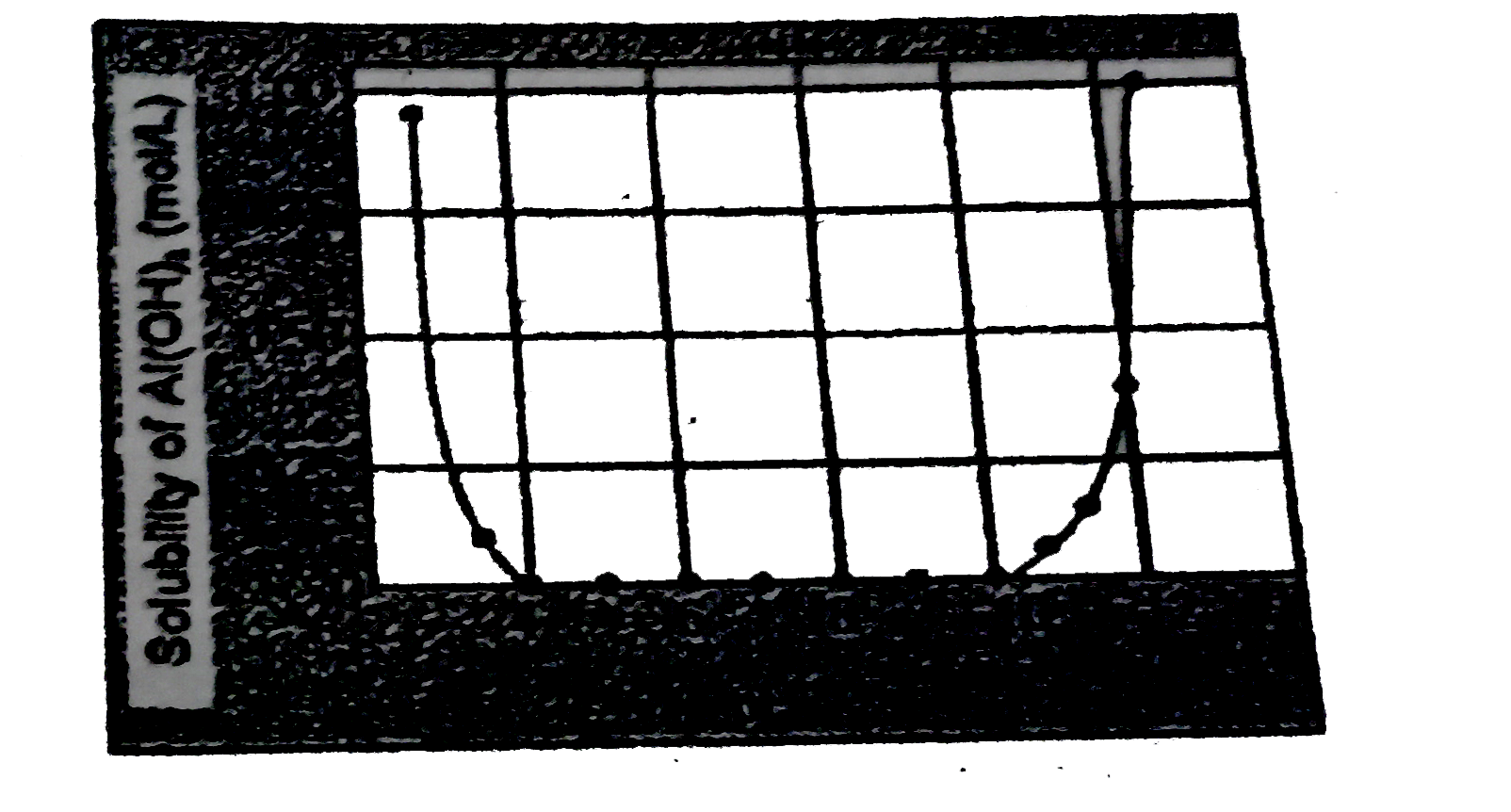
Other examples of amphoteric hydroxides include Zn(OH)2,Cr(OH)3,Sn(OH)2andPb(OH)2, which react with excess OH− ions to form the soluble complex ion Zn(OH)2−4(zincate ion),Cr(OH)−4(chromite ion),Sn(OH)−3 , Fe(OH)2andFe(OH)3 , dissolve in strong acid but not in strong base.
Zn(OH)2 is a amphoteric hydroxide and is involved in the following two equilbria in aqueous solutions
Zn(OH)2(s)⇔Zn2+(aq)+2OH−(aq),Ksp=1.2×10−17
Zn(OH)2(s)+2OH−(aq)⇔[Zn(OH)4]2−(aq),K∘=0.12
At what pH the solubility of Zn(OH)2 be minimum ?
View Solution
